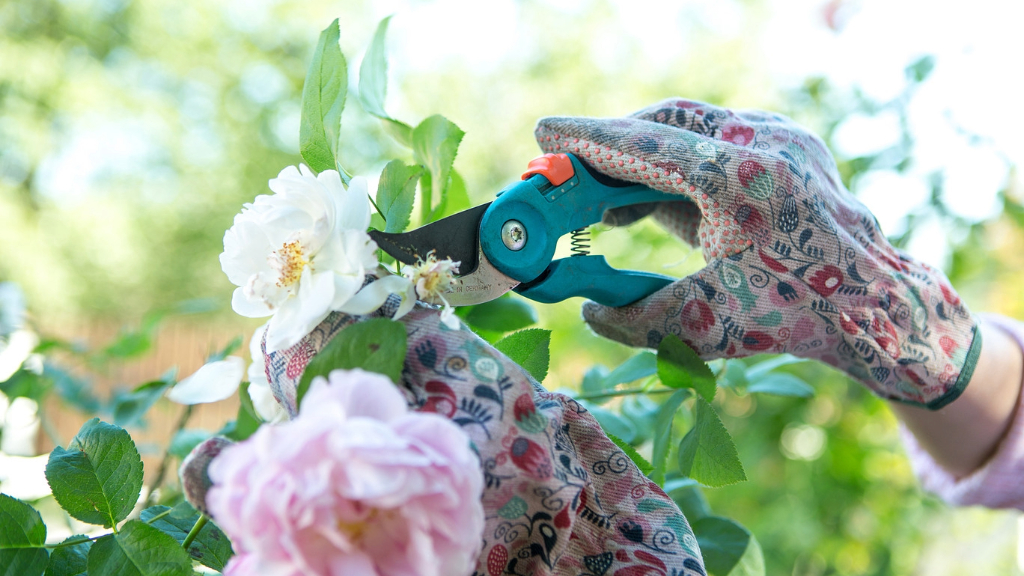The Pros And Cons Of Deadheading


Deadheading - this common practice has been utilized by gardeners for years, but why? There are many reasons for deadheading spent blooms in the garden, but is deadheading necessary? To deadhead or not to deadhead plants is the question, and here we will explore both sides of this debate. Pros of Deadheading Plants Darcy's viewpoint: Reasons for deadheading? Promoting more blooms, giving the garden a tidier appearance, preventing reseeding and also just because it can be a relaxing, almost meditative, garden activity. Let's take a closer look at each of these positive effects of deadheading. More blooms: Blooms contain the reproductive organs of a plant. The main purpose for the colorful, sweet scented flowers is to attract pollinators which will aid in the fertilization of the plant's reproductive organs. Once the blooms have been fertilized, they will begin to form seed. As the plant puts this energy into seed formation, the flower is no longer necessary and will begin to wilt and die. By cutting off these wilting blooms, the plant's energy is redirected into forming new blooms to begin this natural reproductive cycle over again. While not all plants rebloom, many will continue to produce flowers if these spent flower heads are removed. Tidy garden: While some plants do produce attractive seed heads, generally a flower bed full of wilted blooms and seed heads can look neglected, unkempt and forgotten about. One of the pros of deadheading is that it's a quick and easy way to keep your garden looking clean and fresh. As some plants put their energy into forming seeds, the whole plant may begin to look sickly. Leaves may yellow and drop, as the plant figures its work is done and it can die back or go dormant. Deadheading can extend the plant's life. Controls reseeding: Many plants produce an abundance of seeds, which will easily germinate wherever they land. Deadheading blooms before they go to seed can prevent unwanted plants from popping up all over the garden. Gardeners who like a very tidy, controlled landscape often avoid plants that are known to be prolific reseeders. These plants don't need to be avoided; they just need to be deadheaded. Relaxing: In addition to these deadheading benefits, it can be a very relaxing activity. I personally have worked out many problems while quietly sitting outside on a beautiful day just picking off spent blooms in hanging baskets or flowerbeds. Cons of Deadheading in the Garden Nikki's viewpoint: Sure, if you're a control freak or OCD, maybe you have an insatiable desire to snip away at all those spent blooms but "is deadheading necessary?" Are there downsides to deadheading your garden plants? Maybe I'm one of the select few that sees just as many reasons not to deadhead. Don't get me wrong"¦I'm not opposed to the idea and I do practice this technique from time to time, but sparingly. And here's why. Seed production: While a number of plants can be deadheaded for a neater appearance, it won't necessarily make them produce more flowers. And what about those of us that actually want the plants to produce seeds? Plants can get pretty expensive, so it only makes sense that cheap gardeners like myself would want to save seeds for growing next season, especially in the case of annuals. If you're pinching off those spent flowers, you're denying the plant from producing all those wonderful next generation seeds - some of which could even be precious heirlooms you want to hold onto. Unusual interest: We shouldn't try so hard to grow the perfect garden. Let go of the notion that only we know best what the garden should be like or how it should look. Beauty is in the eye of the beholder and oftentimes what people view as an unkempt garden, others see as beauty. Many types of plants have attractive seed heads that can actually provide unusual interest to the landscape, especially in fall and winter when nothing much else is growing. They can even be put to use indoors or utilized for craft projects. Wildlife: In addition to providing interest in the garden, many of those spent flowers provide shelter and their seeds much needed food for birds and small mammals in winter when other food sources are scarce. Not only will leaving some of these help them out, but it's also fun to watch wildlife in their natural environment. Serendipitous: Yes, there are lots of plants that are prolific reseeders and this could cause problems in some places. That said, it can also be fun to watch your garden change as new plants pop up in unexpected places. I refer to this as serendipitous gardening. Many seedlings can produce interesting flowers too - maybe even one of a kind. Allow nature to have its way on occasion. You might find that it can be full of pleasant surprises. And, if you're worried about too many "jumpers," simply deadhead some and leave the others. How Do Deadheading Benefits Measure Up? As you can see, when it comes to deadheading in the garden, it is really a matter of personal preference. Even with all the benefits of deadheading, you need to remember that plants in nature do just fine without being deadheaded. This practice may help with the aesthetics of your garden, but it's rarely important for the health of your plants. In fact, whether you choose to pinch out those spent blooms or not, it won't have any adverse effects either way.
Sign up for the Gardening Know How newsletter today and receive a free copy of our e-book "How to Grow Delicious Tomatoes".

Nikki Tilley has been gardening for nearly three decades. The former Senior Editor and Archivist of Gardening Know How, Nikki has also authored six gardening books.